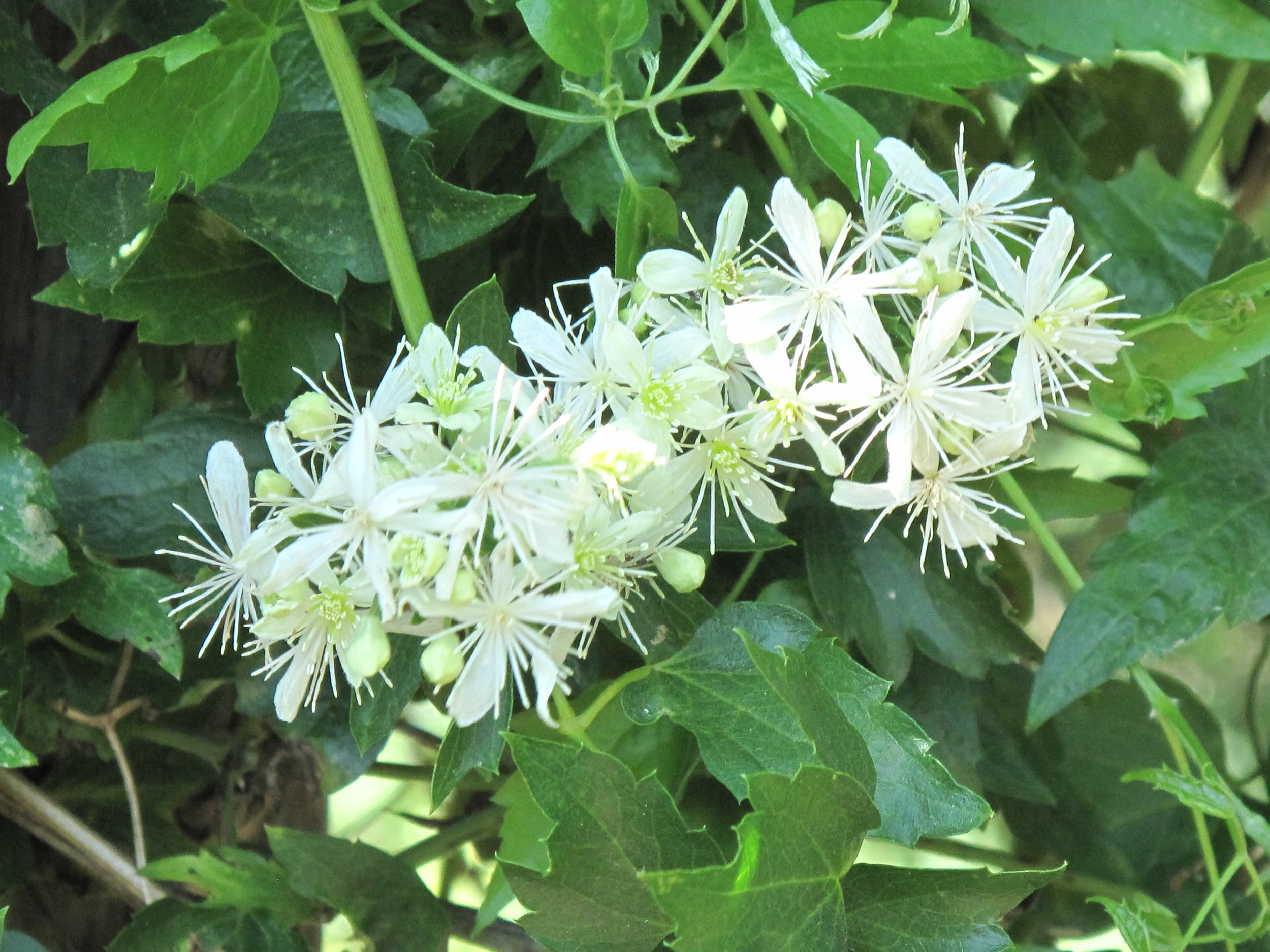Western Clematis
Ethnobotany
Clusters of small white flowers in June create a mound of white in coulees and ravines where this vine climbs, spreading 3–6 metres over fences, shrubs and trees. In late summer and fall, clusters of feathery seed heads develop that hang on the vines into the winter.
The sap of this plant contains a glycoside, ranunculin, that causes severe skin reactions in some people. (Kershaw 244) However, its bark is effective as a tea to treat fever, and its chewed leaves as a treatment for colds and sore throats. (Johnston 35)
Botany
Growth habit and range: This plant is a common, woody climbing vine up to 6 meters in length found growing over shrubs and trees in moist sites in the southern part of the province.
Description: The multiple stems are slender and covered with shredding, greyish-brown bark. The leaves are opposite on the stems, and are a dark green colour. Each leaf has a long stalk which helps to anchor the plant by twining around the stems of other plants. The leaves are divided into 5 deeply toothed leaflets, each measuring 5–6 cm in length and up to 2 cm in diameter. The leaf surfaces bear fine hairs.
The small (20 mm in diameter), white flowers appear in July and August. Each flower is comprised of 4 sepals, each measuring up to 15 mm in length. The flowers occur in panicles - male plants bear only staminate flowers, while female plants bear pistillate flowers with sterile stamens. The fruit is an achene having a long, feathery style measuring 2.5–5 cm long. The fruits form a fluffy head which persists into the winter.
References
Johnston, Alex. 1987. Plants and the Blackfoot. Occasional Paper No. 15., Lethbridge Historical Society, AB.
Kershaw, Linda. 2000. Edible and Medicinal Plants of the Rockies. Lone Pine Publishing, AB.

